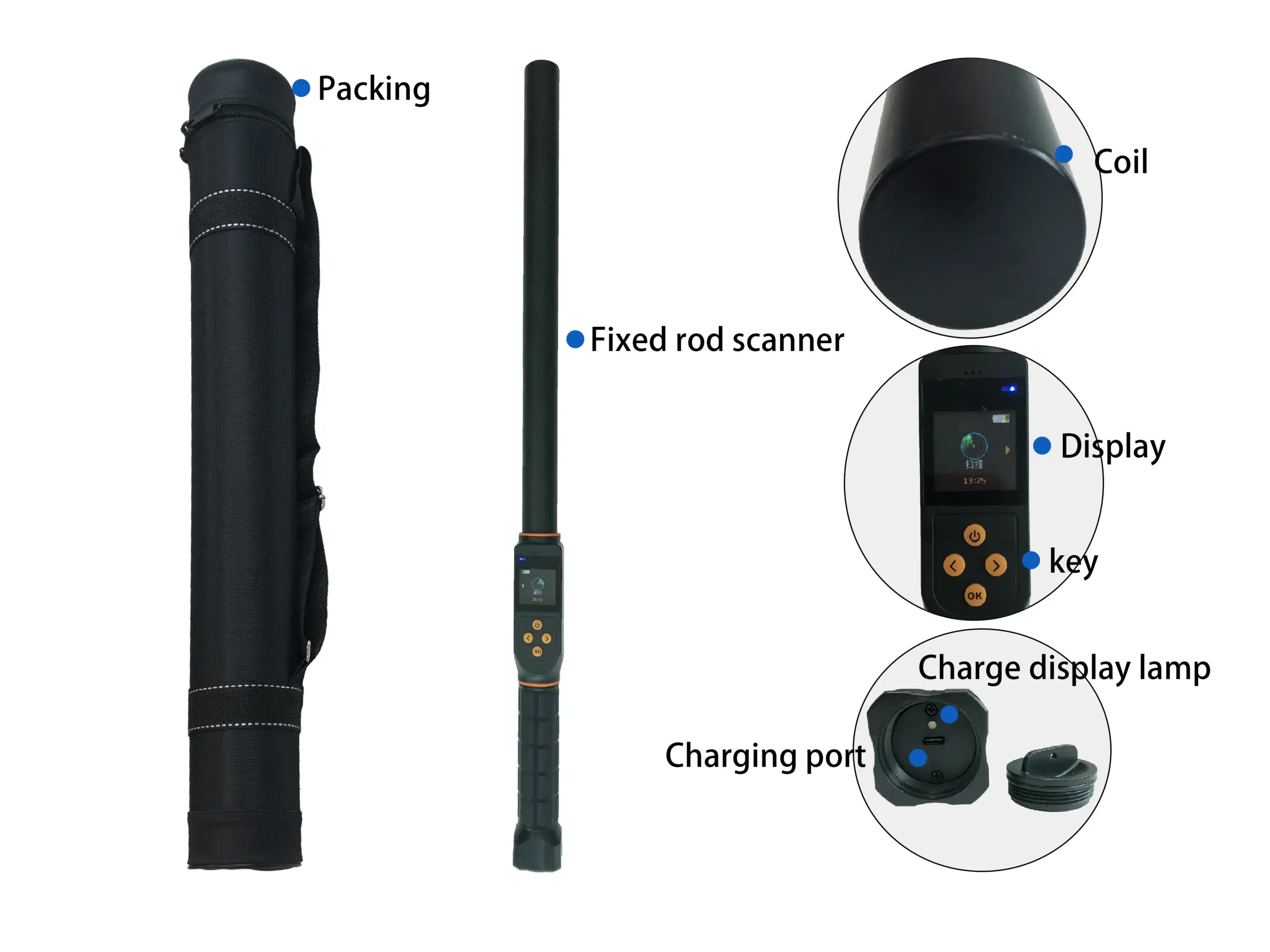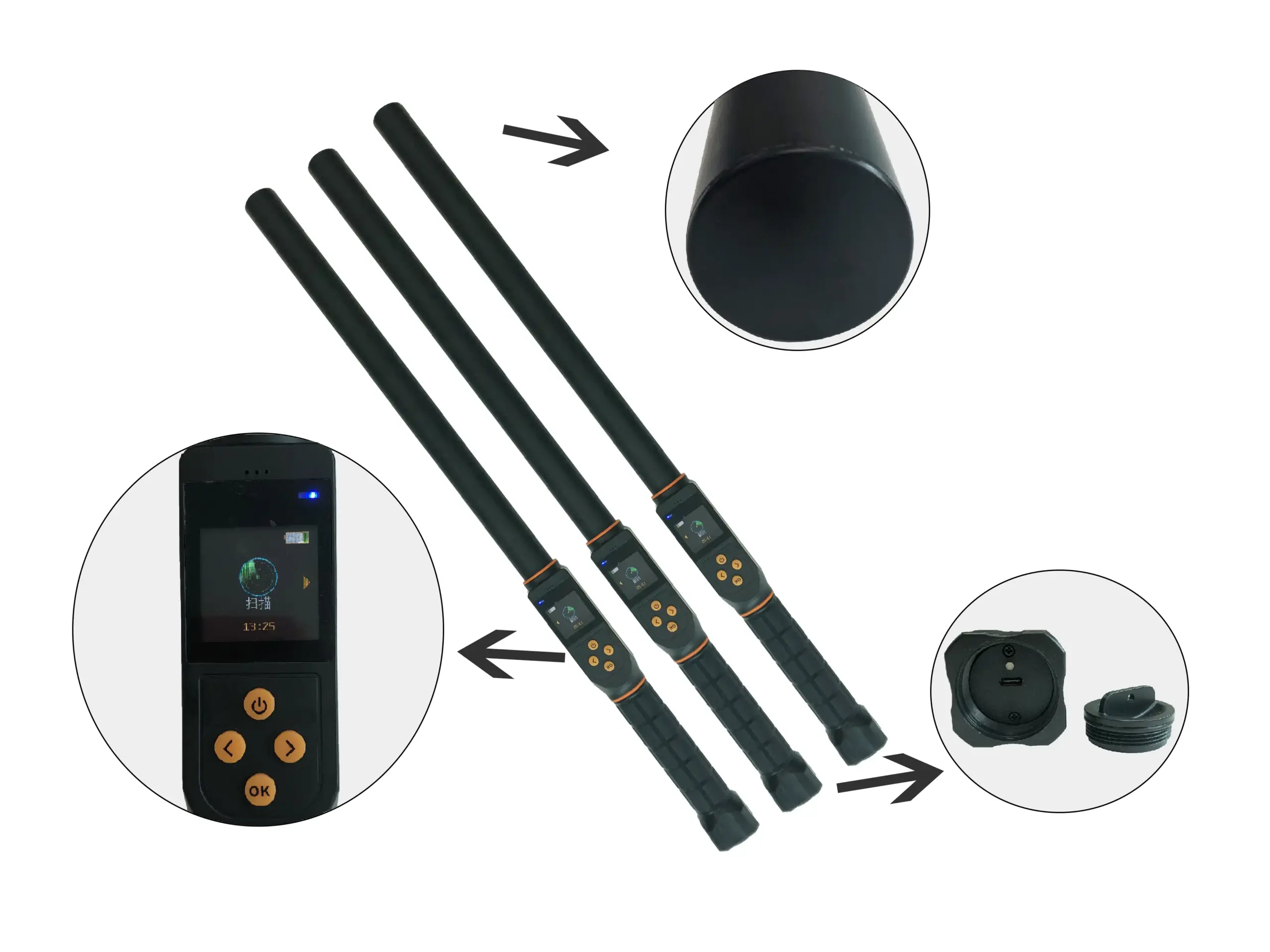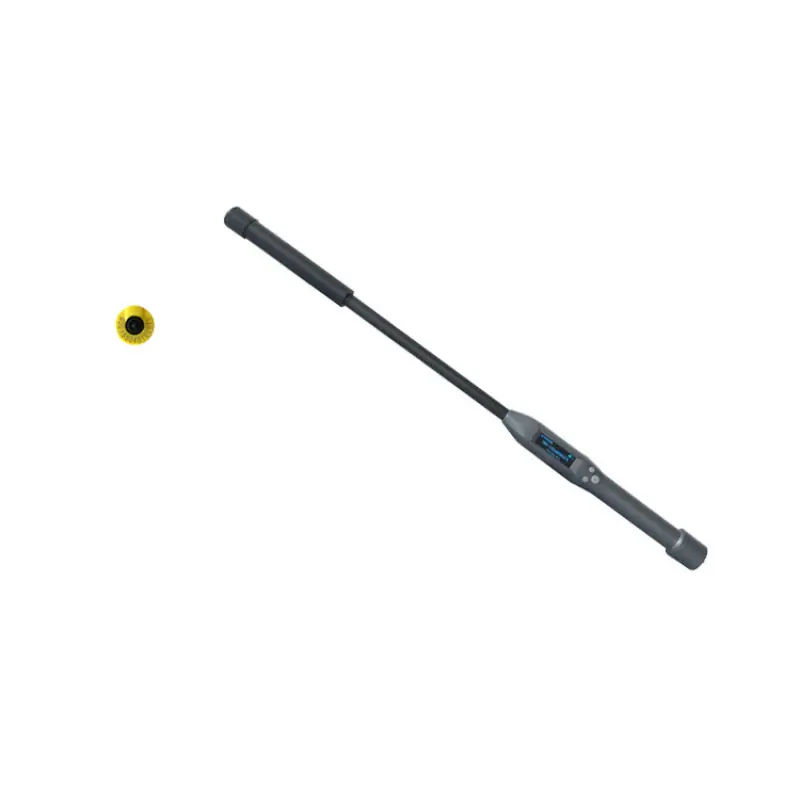L'une des pratiques les plus importantes en matière de gestion des animaux est le suivi des animaux. C'est essentiel pour le suivi régulier de la santé, les programmes de reproduction et la gestion globale du troupeau.
Les lecteurs d'étiquettes EID changent la donne en matière d'identification des animaux. Ce sont des appareils portables qui facilitent la gestion des troupeaux. Plus important encore, ils aident les agriculteurs à identifier et à suivre leurs animaux.
Cet article est consacré aux lecteurs d'EID, à leurs fonctions, à leurs applications, à leurs avantages, etc. À la fin de ce guide, vous saurez comment les lecteurs d'EID peuvent améliorer votre efficacité dans la manipulation des animaux. Poursuivez votre lecture pour en savoir plus.
Qu'est-ce qu'un lecteur d'étiquettes EID ?

EID est l'abréviation de Electronic Identification (identification électronique). Un lecteur EID est un appareil qui lit rapidement et avec précision les étiquettes électroniques implantées ou fixées sur les animaux. Les formes les plus courantes de ces dispositifs sont les marques auriculaires ou les micropuces. Chaque étiquette contient des codes d'identification uniques pour chaque animal.
Un lecteur d'étiquettes EID peut être considéré comme un scanner sophistiqué, semblable à ceux utilisés dans les supermarchés pour lire les codes-barres. Cependant, les lecteurs EID détectent et interprètent les radiofréquences des étiquettes au lieu des codes-barres.
Fonctions des lecteurs d'étiquettes EID
La fonction première d'un lecteur de badge EID est d'identifier les animaux avec précision. Mais ce n'est pas tout. Cette section présente quelques fonctions clés d'un lecteur EID moderne.
1. Identification rapide :
Avec un lecteur d'étiquettes EID, vous pouvez identifier plusieurs animaux en quelques secondes. De plus, cela est possible même dans des enclos ou des champs surpeuplés.
2. Transfert de données :
Vous pouvez facilement transférer les données collectées par l'étiquette vers un ordinateur ou un appareil mobile. Vous pouvez ainsi effectuer des analyses plus approfondies et enregistrer les données de manière pratique.
3. Stockage des données :
La plupart des lecteurs d'étiquettes EID pour bovins enregistrent automatiquement des milliers de numéros d'étiquettes. Ils vous permettent d'enregistrer des informations même s'ils ne sont pas connectés à un ordinateur.
4. Intégration et gestion :
De nombreux lecteurs d'EID pour le bétail peuvent s'intégrer aux logiciels et pratiques de gestion agricole. Ils peuvent ainsi fournir des mises à jour en temps réel des registres d'animaux afin d'assurer des soins appropriés au bétail.
5. Entrée de données supplémentaires :
Certains modèles avancés de lecteurs d'EID permettent aux agriculteurs et aux éleveurs de bétail de stocker des données supplémentaires. Ces informations peuvent aller du poids à l'état de santé et à l'âge, en plus de l'identification de l'animal.
Avantages de l'utilisation d'un lecteur d'étiquettes EID pour le bétail

1. Stockage et transmission exacts des informations
Traditionnellement, les agriculteurs et les éleveurs comptaient leurs troupeaux manuellement. Ils s'en remettaient au travail humain pour obtenir le nombre correct de bovins dans le troupeau. Cette méthode fonctionne, certes, mais le risque d'erreur est beaucoup plus élevé.
La lecture électronique élimine l'erreur humaine dans le suivi du bétail et l'enregistrement des numéros d'identification. Vous n'avez qu'à vous asseoir et laisser le lecteur EID faire le reste.
2. Rentabilité
Bien que l'investissement initial dans les lecteurs EID soit élevé, les avantages à long terme sont indéniables. Tout d'abord, un lecteur d'EID pour le bétail élimine le besoin de travail manuel. Vous n'aurez donc pas à vous soucier de payer des salaires supplémentaires à vos employés. En outre, en raison de leur taille, les lecteurs EID sont faciles à entretenir. Ils entraînent moins de frais d'entretien et vous n'avez plus qu'à vous soucier de remplacer les étiquettes défectueuses.
3. Amélioration du suivi
Un lecteur d'étiquettes EID aide les agriculteurs à mieux suivre leur bétail. L'étiquette EID attachée contient l'âge de l'animal, son statut de reproduction, sa santé et d'autres informations importantes.
Un lecteur d'étiquettes EID permet de retracer facilement l'historique d'un animal. En outre, les données stockées constitueront un point de départ utile pour les enquêtes en cas d'apparition d'une maladie.
4. Gestion du temps
L'un des avantages de l'utilisation des lecteurs EID est qu'elle vous permet de gagner un temps précieux. Lorsque vous passez de l'identification manuelle des animaux à l'utilisation de lecteurs d'étiquettes EID, vous remarquez immédiatement une accélération de vos activités. Qu'il s'agisse de compter le bétail ou d'essayer de savoir quelles vaches doivent être livrées.
Principales applications des lecteurs d'étiquettes EID pour la gestion du bétail

1. Gestion des troupeaux :
Les lecteurs d'étiquettes EID permettent d'identifier rapidement et avec précision les bovins individuels dans les grands troupeaux. Cela facilite la gestion de votre troupeau et vous permet de suivre son état en temps réel.
2. Gestion des aliments pour animaux :
Certains systèmes d'alimentation avancés utilisent des lecteurs EID pour distribuer des rations alimentaires mesurées à chaque animal. Ils régulent la quantité d'aliments en fonction des besoins nutritionnels de l'animal et de son état de production.
3. Suivi de la production laitière :
Dans les exploitations laitières, les lecteurs EID enregistrent automatiquement la production de lait de chaque vache. Cela permet de suivre les performances individuelles et de déterminer quelles vaches sont aptes à produire du lait à des fins commerciales.
4. Programmes de sélection :
Les lecteurs EID aident les agriculteurs à tenir des registres d'élevage précis. Ces appareils pratiques vous permettent de savoir quels animaux ont été accouplés, quand et avec quels résultats. Ces résultats sont essentiels pour la croissance d'un troupeau et même pour les programmes d'amélioration génétique.
5. Surveillance de la santé :
Les lecteurs d'EID permettent de consulter facilement les dossiers médicaux d'un animal lors des contrôles de routine. En outre, les lecteurs d'étiquettes EID jouent un rôle crucial dans le traitement des maladies. En cas d'épidémie au sein du troupeau, vous pouvez utiliser les enregistrements pour localiser la source de la maladie et la combattre. Cela permet d'arrêter la propagation de la maladie et de sauver autant de bétail que possible si la maladie est mortelle.
6. Suivi des mouvements :
Les lecteurs d'EID permettent de suivre les animaux qui se déplacent entre les pâturages ou qui quittent la ferme. Ils se trouvent généralement aux portes ou dans les zones de chargement où les animaux sont susceptibles de passer. Les éleveurs peuvent ainsi localiser leur bétail errant en suivant la trace de l'étiquette EID. Cela leur permet d'éviter les vols et les disparitions de bétail.
7. Enchères et ventes :
Un lecteur EID permet de fournir aux acheteurs potentiels toutes les informations nécessaires lors des ventes aux enchères ou dans les abattoirs. Cela permet aux clients d'éviter de se faire arnaquer par un animal mortellement malade ou ne répondant pas à leurs normes.
8. Vérification du transport :
Lorsqu'un animal est déplacé de la ferme, l'agriculteur ou le nouveau propriétaire peut suivre ses mouvements à l'aide d'un lecteur EID. Cela leur permet de vérifier les animaux qui sont chargés ou déchargés et d'éviter les confusions tout au long du déplacement.
9. Gestion du vêlage :
Les lecteurs EID permettent d'enregistrer des données de naissance précises et d'identifier les paires mère-veau correctes. Cela permet d'éviter les situations où un veau est placé avec la mauvaise mère, ce qui est souvent une erreur dangereuse.
10. Dans l'administration des médicaments :
Un lecteur d'étiquette EID transmet les informations d'une étiquette EID à l'utilisateur. Évitez de donner le mauvais médicament ou le mauvais dosage lorsque vous administrez des médicaments à un animal. Après tout, cela pourrait avoir des conséquences désastreuses pour l'animal et entraîner des pertes pour les deux parties. Les lecteurs d'EID permettent de s'assurer que le bon animal reçoit le bon médicament et le bon dosage. Grâce à ces dispositifs, vous pouvez éviter de donner un médicament à un animal en bonne santé ou d'administrer le mauvais médicament.
Comment utiliser efficacement un lecteur d'étiquettes EID ?
1. Choisir le bon lecteur :
Tout comme les étiquettes d'identification, les lecteurs d'identification se présentent sous différentes formes et tailles. Avant d'en choisir un, il faut donc s'assurer que le lecteur est compatible avec l'étiquette d'oreille. En outre, il doit présenter toutes les caractéristiques nécessaires, telles que la portée et la capacité.
2. Maintenir une distance appropriée :
La plupart des lecteurs fonctionnent mieux lorsqu'ils sont tenus à une certaine distance de l'étiquette. Si le lecteur est tenu trop loin ou trop près, il risque de mal fonctionner ou de s'arrêter. Par conséquent, la distance appropriée pour votre lecteur EID dépend de votre étiquette. Vous pouvez vérifier les spécifications de l'appareil pour connaître la distance correcte.
3. Familiarisez-vous avec l'appareil :
Il n'y a pas de meilleure façon d'utiliser un lecteur d'étiquettes EID que de connaître la fonction de chaque petit paramètre. En bref, prenez le temps d'apprendre les fonctions de votre lecteur. Consultez le guide du fabricant ou regardez des vidéos tutorielles pour en savoir plus sur votre appareil.
4. Entretien régulier :
Garder votre lecteur d'EID propre est un moyen de prolonger sa durée de vie. Ces appareils sont généralement conçus pour résister à des conditions extrêmes, mais un entretien adéquat contribue grandement à prolonger leur durée de vie.
5. Former tous les utilisateurs :
Si plusieurs personnes utilisent le lecteur d'EID, veillez à ce qu'elles soient formées à son utilisation et à sa gestion correctes. Chaque employé doit savoir comment manipuler les lecteurs d'EID. Cela permettra d'éviter la perte d'informations vitales à la suite d'une mauvaise manipulation.
Facteurs à prendre en compte lors du choix d'un lecteur d'étiquettes EID pour le bétail
1. Plage de lecture
Réfléchissez à la proximité que vous souhaitez avoir avec l'animal. Certains lecteurs ont une longue portée de lecture qui permet une identification à grande distance. Choisissez donc un lecteur qui correspond au comportement de votre troupeau. Un lecteur à longue portée conviendra mieux aux animaux nomades. Un lecteur EID avec une portée plus courte sera plus adapté si vos animaux restent à la ferme.
2. Capacité de la mémoire
Si vous devez travailler dans des endroits où l'accès à un ordinateur n'est pas immédiat, choisissez un lecteur d'EID doté d'une grande mémoire. Mieux encore, choisissez un lecteur doté d'une grande mémoire et d'une longue durée de vie des piles.
3. Durabilité et affichage
Un lecteur d'EID doté d'un écran clair et facile à lire est essentiel, en particulier en plein soleil ou dans des conditions peu lumineuses. Les environnements agricoles peuvent être difficiles pour les équipements. Nous vous conseillons donc d'en choisir un qui soit solide et résistant à l'eau.
En conclusion
Les lecteurs EID constituent une avancée significative dans l'identification et la gestion des animaux. Ils permettent de tenir de meilleurs registres, d'améliorer le bien-être des animaux et de faire des choix plus éclairés.
Comme pour toute technologie, la clé du succès réside dans le choix de l'outil le mieux adapté à vos besoins.
En résumé, les sections ci-dessus contiennent des conseils pour choisir le bon lecteur EID. En outre, avec la bonne approche, ces appareils peuvent être la clé pour faire passer votre gestion des animaux à un niveau supérieur.
